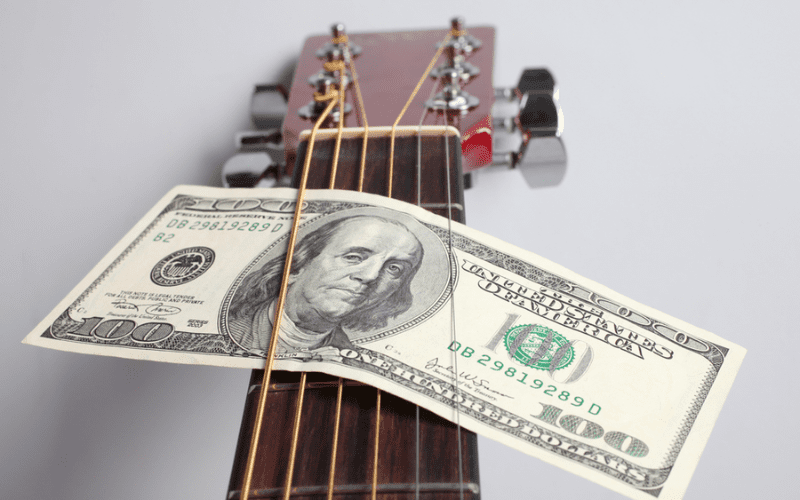If you’re just getting into recording and selling your music, you’ve no doubt heard the word “royalties” tossed around a lot. You may be wondering, what are music royalties? If you’re unfamiliar with the term and are wondering how do music royalties work, we’re here to explain it and help you understand everything you’ll need to know about music royalties. In this article, we’ll be dealing specifically with digital music royalties, which are a must in a music distribution business.
Music Royalties Definition
Music royalties are the payments that rights holders – that is, songwriters, recording artists, composers, and any representatives – receive in exchange for any licensed use of their music. Any institution that uses an artist’s music in any way, whether on the radio, a streaming service, or a TV show, must pay the artist and songwriter to use their music.
How Are Music Royalties Paid?
Music royalties are paid to artists and songwriters through performance rights organizations, otherwise known as PROs. These include music distributors, who are the middlemen between the artist and public consumption.
Types of Music Royalties
Only artists who have filed official copyright with the Library of Congress receive copyright royalties. Copyright laws protect work that is fixed in a tangible medium of expression: i.e., a sound recording. There are two types of copyrights: composition copyrights and sound recording copyrights. A recorded song holds both types of copyrights. Sometimes the recording artist and the songwriter are the same person, and sometimes they are separate people.
Composition Copyright
The composition copyright covers the written song, that is, the melody and lyrics. It is what the songwriter has composed but might not have recorded yet. The songwriter owns the composition copyright.
Sound Recording Copyright
Sound recording copyright covers the recorded music. In most cases, the artist who records the music owns this copyright for the recording.
There are six different types of music royalties in the United States. They are called “recording rights.” They are:
1. Streaming Royalties
Streaming royalties are paid to rights owners whose music is played on digital music streaming services. This type of royalty is very important as streaming services have become very popular. Sound recordings are licensed to streaming platforms, and the payout for each digital stream is the streaming royalty. Recording artists and/or labels work directly with music distributors to get their music on these platforms. The distributors make sure the artist and labels receive their royalties.
2. Neighboring Rights Royalties
A neighboring royalty is paid to the songwriter and publisher who owns the copyright for the musical composition. Whenever a recorded version of their composition is played publicly (terrestrial radio), the composer and publisher get a neighboring rights royalty. The neighboring royalties are collected and distributed by music publishers. One exception to the rule, though, neighboring royalties are not collected upon in the United States.
3. Digital Performance Royalties
Although the United States does not pay royalties for terrestrial radio, they do pay the artist and label when their music is played on digital internet, satellite, and cable radio stations. The US uses a designated collection society (Sound Exchange) to pay out digital performance royalties. The recording artist and rights owner must register with the Sound Exchange to receive digital performance royalties.
4. Sync Licensing Fees
Sync licensing fees apply to when music is synchronized, or played with, any other kind of content. This content can be TV shows, ads, movies, and video games. In this case, the licensee must get a license from the licensor and pay royalties to both the sound recording owner and the composition owner.
5. Public Performance Royalties
Whenever a song is played in a commercial environment such as a store or a coffee shop, the venue owner must pay royalties to the songwriter. Venues purchase blanket licenses from performance rights organizations, or PROs, which allow them to play songs. If an artist performs live at a venue, they must submit their setlist to the venue, who submits it to the PRO. The PRO ensures that the songwriters receive their royalties.
6. Mechanical Royalties
Mechanical royalties refer to when a copyrighted composition is reproduced or distributed, whether in digital or physical form. Most of the time, these royalties come from digital streaming services. Whenever a listener plays a song on a streaming service, the streaming platform pays mechanical royalties. This does not apply to non-interactive streaming platforms (such as Pandora), but only to interactive platforms (such as Spotify). Mechanical royalties are paid through PROs in the US, such as MLC.
How to Get Royalties from Compositions and Recordings
Once an artist records music with a label or writes a song with a publisher, they can then promote and monetize their works.
The next step is getting their works copyrighted so that the artist and songwriter can collect their royalties and their works are protected. Artists can then make a deal with a distributor to license the music to streaming platforms. The composer can also make a deal with a publisher, who will license their songs and collect money on their behalf. Few publishers are also music distributors. One of these companies, Sugo Music Group, is a respected global music distribution and publishing company. They’ve been around for 35 years and have the experience to get your recordings and songs distributed worldwide.
Once the music starts getting streamed, broadcasted, or licensed in some form, the artist and the songwriter will begin receiving their royalties.
